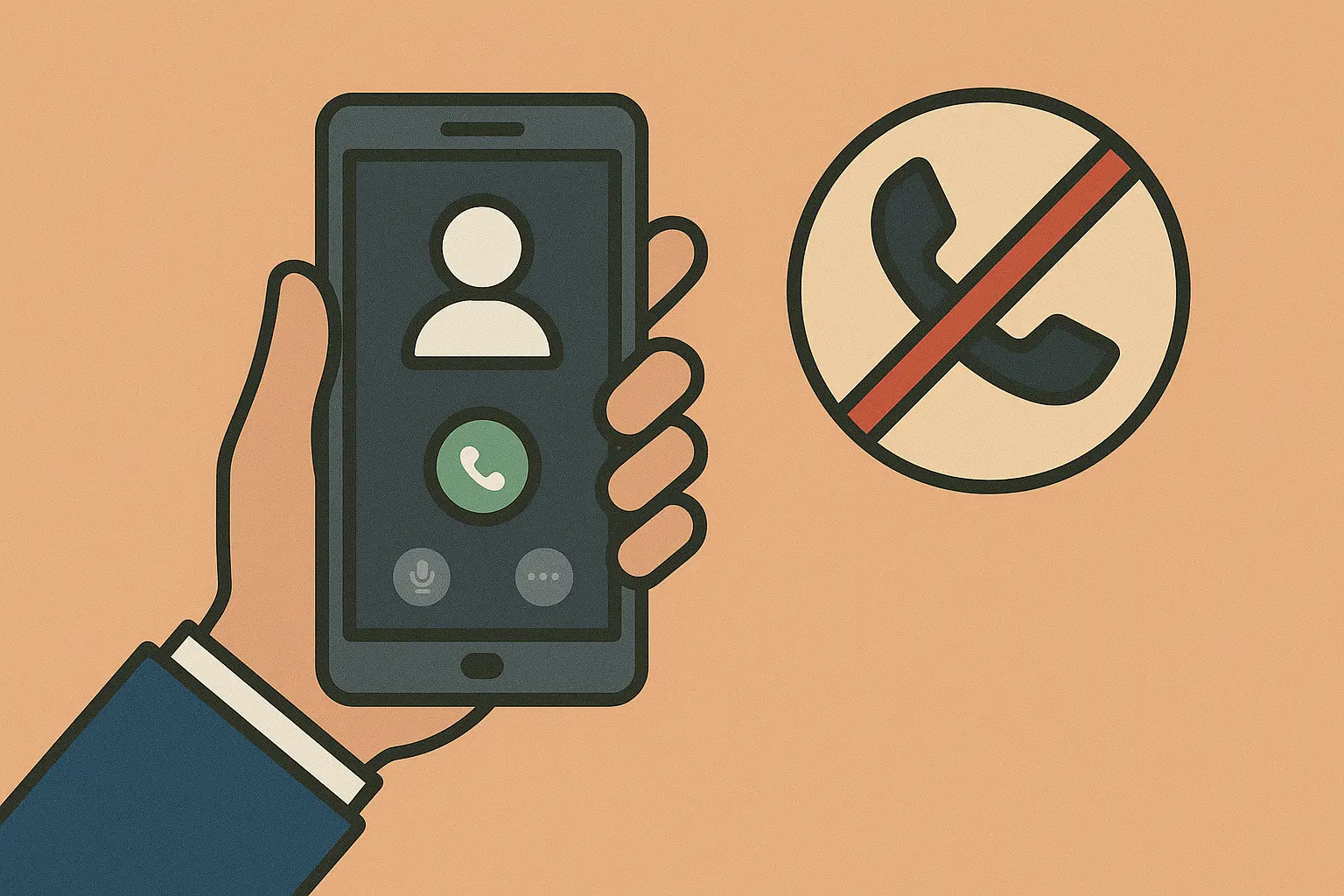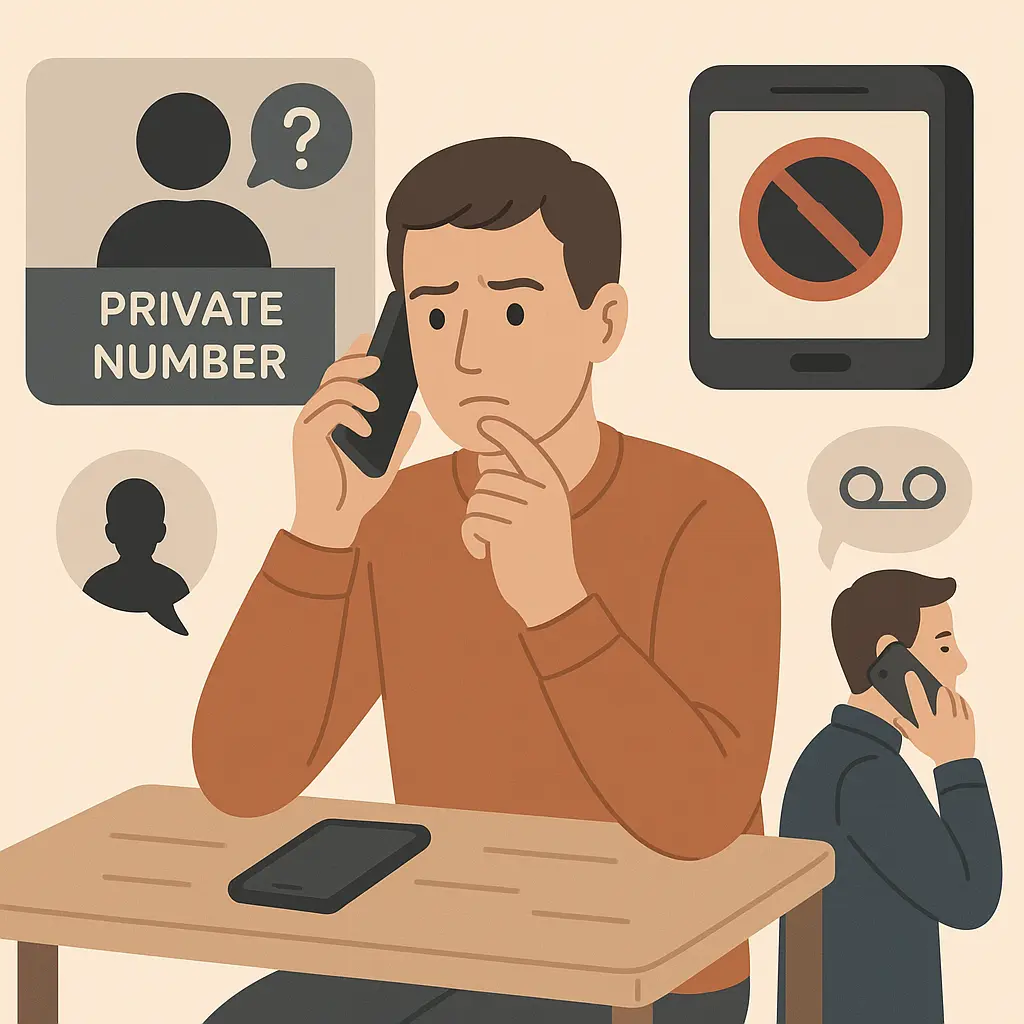
Practical Ways on How to Call a Blocked Number Safely
Summary:
Have you ever wondered how to call a blocked number without crossing ethical lines? Whether it’s a missed business call, a restricted number showing up on your phone, or the need to reach someone who blocked you, the situation can be confusing. In this guide, we break down exactly what blocked numbers mean, why people use them, and the practical ways you can call back safely. From dialing *67 to using phone settings, carrier services, or VoIP apps, you’ll discover step-by-step methods that actually work.
More importantly, we’ll cover when it’s better to respect boundaries and choose alternative communication methods. By the end, you’ll know not just how to call a blocked number, but also how to do it responsibly, without damaging trust or crossing lines.

We’ve all been there, you check your call log and see “Private Number,” “Restricted,” or “Unknown Caller.” You’re left wondering: Who was that? Why are they hiding their number? And can I call them back?
On the other side of the coin, maybe you’ve been blocked by someone. Your calls don’t go through, they go straight to voicemail, or you hear a message saying the person isn’t accepting calls. Naturally, curiosity or urgency kicks in, and you start looking for ways to call a blocked number.
The good news? There are several safe, practical, and ethical ways to reach someone, even if their number is hidden or if they’ve blocked yours. The bad news? Not every method is respectful, or even legal in certain contexts.
This guide will walk you through everything: how blocked numbers work, why people block calls, step-by-step methods to call them back, and when it’s better to simply respect boundaries. Along the way, we’ll also explore ethical alternatives so you can make the best decision.
Understanding Blocked Numbers

What Does It Mean When a Number Is Blocked?
When your number is blocked by someone, it means they’ve intentionally chosen not to receive your calls or messages. This can be done on both iPhone and Android with just a few taps.
Here’s what typically happens:
- Your call rings once, then drops.
- It may go straight to voicemail.
- You could hear a pre-recorded carrier message saying the person isn’t accepting calls.
On the flip side, when you receive a call from a blocked or restricted number, it means the caller has hidden their identity, usually by dialing *67 or adjusting their phone settings.
In short, there’s a difference:
- You being blocked: Someone doesn’t want to hear from you.
- Blocked/hidden caller ID: Someone is calling anonymously.
Why Do People Block Numbers?
Blocking is a common feature, and people use it for many reasons:
- Avoiding Spam Calls
With robocalls and telemarketing on the rise, many people block unfamiliar or persistent numbers. - Needing Personal Space
Sometimes, blocking is just about taking a break, whether from a friend, colleague, or even a loved one. - Safety Concerns
In cases of harassment, scams, or unwanted attention, blocking provides immediate protection. - Business Boundaries
Professionals often block numbers outside of work hours to separate business from personal life. - Temporary Issues
It might not be personal, people traveling, switching phones, or troubleshooting carrier issues sometimes block calls temporarily.
Important: Not every block is permanent or personal. But understanding why someone blocked you helps you decide whether calling back is appropriate.
Legal & Ethical Considerations
Before you even think about calling a blocked number, pause and reflect.
- Legal: In most regions, calling back a blocked number isn’t illegal. However, repeated attempts, harassment, or deception can have serious consequences.
- Ethical: If someone blocked you intentionally, overriding that decision can cause distrust and escalate conflict.
- Professional: For businesses, aggressive attempts to bypass a block can harm your brand reputation.
Think of it this way: Just because you can doesn’t always mean you should.
Common Methods to Call a Blocked Number
Here are practical methods you can use, with pros and cons for each.
*1. Use 67 to Hide Your Caller ID
This is the oldest trick in the book. By dialing *67 before a phone number, your caller ID is hidden, and the recipient sees “Private” or “Unknown.”
How to Do It
- Open your phone dialer.
- Type *67 followed by the number.
- Hit call.
Example: *67 555-123-4567
Pros of Using 67:
- Free and quick to use.
- No need for apps or extra software.
- Works on most U.S. and Canada carriers.
Cons of Using 67
- Doesn’t work for toll-free or emergency numbers.
- Many people ignore “Unknown Caller.”
- Ineffective if the recipient has blocked anonymous calls.
Best for one-time anonymous calls.
2. Hide Caller ID in Phone Settings
Instead of dialing *67 every time, you can permanently hide your number.
- iPhone: Settings → Phone → Show My Caller ID → Toggle OFF.
- Android: Settings → Call Settings → Caller ID → Hide Number.
This way, all your outgoing calls show up as “Private.”
Pros:
Convenient, no need to dial codes.
Cons:
All calls look anonymous, which can confuse friends or colleagues.
3. Use Another Number
Sometimes, the easiest solution is to switch numbers.
Options Include:
- Borrowing a friend’s phone.
- Using a work phone.
- Trying a VoIP service like Google Voice, Skype, or Burner.
Pros:
Lets you bypass personal blocks.
Cons:
Some apps charge fees; people may still ignore unfamiliar numbers.
4. Contact Your Carrier
Your mobile provider has options that can help.
- Caller ID Masking: Request to permanently block or mask your caller ID.
- Tracing Calls: Some carriers allow you to use *57 to trace restricted calls (info logged with law enforcement, not shared with you).
These options are usually limited to harassment or security issues.
Pros of Contacting Your Carrier
- Provides a legitimate, official solution.
- Can be helpful in harassment or urgent cases.
Cons of Contacting Your Carrier
- Limited to special situations, can’t be used casually.
- Some carriers may charge fees for certain services.
Ethical Alternatives Instead of Forcing a Call
If your call won’t go through, you have other options.
- Send a Text or Email: A respectful message allows the recipient to respond if they choose.
- Social Media Messaging: LinkedIn, WhatsApp, or Messenger can serve as alternate communication channels.
- Respect Boundaries: Sometimes, the best action is no action. If someone clearly doesn’t want contact, forcing it may burn bridges permanently.
Practical Tips for Safer Communication
- Be Transparent: If you hide your ID, introduce yourself immediately.
- Limit Attempts: One call is fine; repeated attempts can feel like harassment.
- Use Professional Tools: If you’re in sales or business, tools like PowerDialer.ai help you avoid manual tricks and connect ethically with verified contacts.
Conclusion
Learning how to call a blocked number can be useful, whether you’re trying to identify a caller or reconnect with someone who blocked you. From using *67 and adjusting phone settings to using VoIP apps and carrier services, the options are there.
But the bigger takeaway? Responsibility. Just because you can bypass a block doesn’t mean you always should. Respect boundaries, use alternative communication methods, and avoid crossing ethical lines.
And if you’re a professional in sales or business, don’t waste time chasing blocked numbers. Use smarter tools like PowerDialer.ai to connect with prospects directly, without the guesswork.
Book your free PowerDialer.ai demo today and see how you can streamline outreach.
FAQs on Calling a Blocked Number
1. Can I call back someone who blocked me?
Yes, but it may not be welcome. If the block was intentional, it’s better to respect their choice.
2. Is it illegal to call a blocked number?
No, but repeated unwanted calls can cross into harassment territory.
*3. Does 67 still work in 2025?
Yes, it still hides your number on most carriers. However, some recipients use apps that block anonymous calls.
4. Can I find out who called me from a blocked number?
Not directly. You can use carrier services (*57) or third-party apps, but results are limited.
5. What’s the safest way to reach someone who blocked me?
Try email or social media. If it’s personal, sometimes the best approach is patience.
6. Are there apps that unblock numbers automatically?
No ethical apps can override someone’s block settings. Any tool claiming to do this is unsafe.
7. What if the blocked call is urgent?
If it’s an emergency, find another verified way to reach the person, or involve authorities if safety is at risk.
